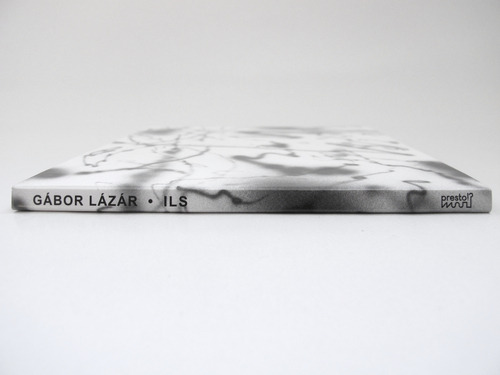Gábor Lazár’s additive synthesis
Published April, 2014
by Easterndaze

Another release on the Hungarian scene is something different than the traditionally more club friendly output of the Budapestians spearheaded by the likes of Norwell or S Olbricht. But still, the connection is there, as Gábor Lazar is graduate of the Faculty of Music and Visual Arts in Pécs, which is an institution also attended by S Olbricht in the past, one of the rising artists of the Farbwechsel collective with a handful of releases on internationally acclaimed labels. The university with such a focus is really rare in the region of Central and Eastern Europe and it seems that it’s spawned a talented young generation of musicians with a really varied output, not always strictly academical. Still, the tradition in Hungarian experimental music has been steady with renowned composers like György Ligeti and the recently acclaimed Ákos Rózmann.
And so is ILS, Lazár’s record. The entire concept of the album revolves around using a single note which is strictly followed through on all of the 11 tracks. With the help of additive synthesis and computer generated algorhythms, the entire release is an ever changing rhythm adventure, jumping through the random sonic hurdles and slight colour changes in sound stretching and compressing it into new spectacular sound sculptures. This may sound boring, but it’s definitely not. If you pay enough attention, you can discover that each of the tracks offers a unique take on the lecture of additive synthesis with a diverse and surprisingly rich soundscale. Through careful and repetitive listening you can slowly discover smart and detailed structures which are ruling over the fictitious chaos. The flow of the tracks changes all of a sudden and despite the application of the computer sound generated approach, they have their own, organic life – machines talking through their mathematical, yet unpredictable language. All the tracks were recorded without any further edits which makes it an even more fascinating account of the possibilities and output of contemporary computer generated music, which is maybe not accessible for the casual listener, but if you give it a try and deep listen, you can discover beautiful, microscopic puns.
Gábor is not unknown to the music world, having collaborated on a split tape with Russell Haswell. The artwork and cover of his latest release were designed by Lorenzo Senni, proving that there is one more Hungarian artists with promising odds to make it big internationally. Regarding his academical background and using the latest approaches combined with a limiting concept indicates a promising future not only for him, but possibly for the other Pécs university alumni. This is soundcraft at its best, which will definitely please fans of Mark Fell or Florian Hecker.
by b. arctor